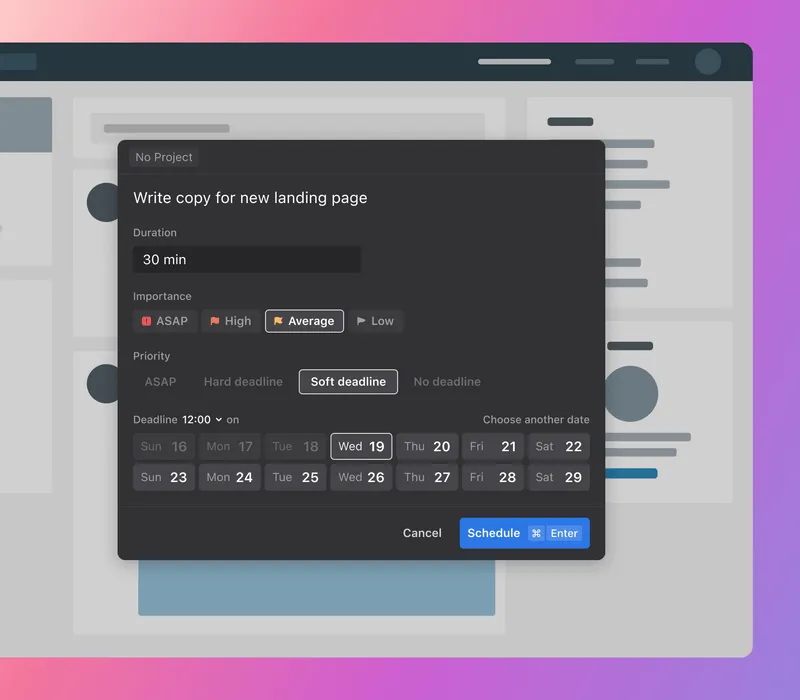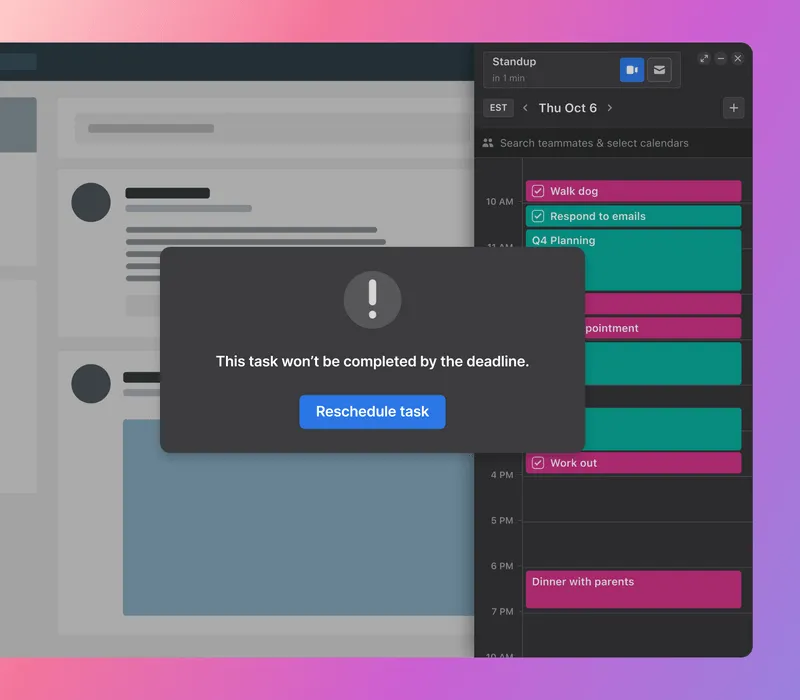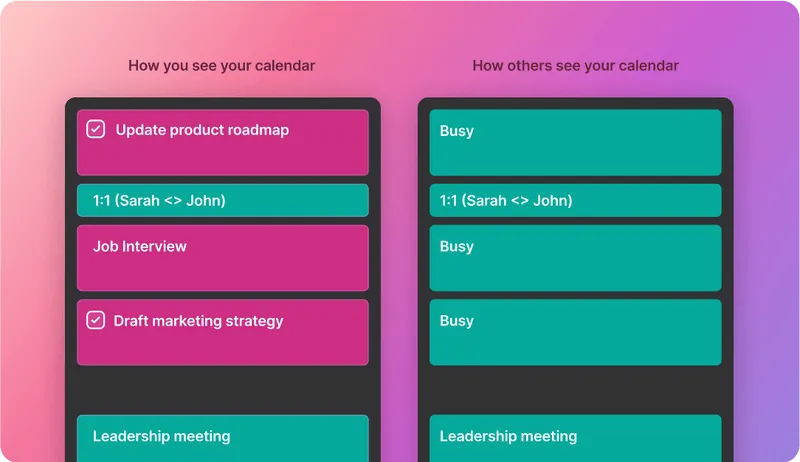Nothing cripples your relationship with a client more than a missed deadline. And nothing hinders your productivity more than spending hours trying to organize and plan around future time constraints — only to mismanage your time and miss a deadline once again.
Learning how to juggle various time constraints is key to maintaining productivity across multiple projects and teams.
In this article, we’ll explore the different types of time constraints, share tips on managing time constraints effectively, and provide practical tips on coordinating several time constraints from various sources and across different teams.
If you’re ready to consistently meet your deadlines and provide reliable service to your customers, keep reading to learn how to tackle time constraints with ease.
What is a time constraint?
A time constraint is a type of project management constraint that outlines when a task or project can start and when it must be finished. Time constraints include the first and last dates in your project schedule, as well as important deadlines for phases throughout the project.
For example, if Steve is leaving for a vacation on Friday, any work he’s involved in needs to be completed by the end of Thursday. And he’ll need to be back from vacation before his work can start up again.
Managing time constraints is a vital component of scope management. Other constraints, such as cost, quality, resources, and risk, are often easier to shuffle around or compromise on.
Since time is a limited resource, it can’t be borrowed in the same way that resources can.
For example, if an event is scheduled for New Year’s Eve, you can’t move the launch to January 3 if you’re behind schedule.
 |
Time constraints often incorporate priority and importance. Priority refers to how quickly the task needs to be completed, while importance refers to the completed task’s value for the company.
Different types of time constraints
A time constraint can depend entirely on one person’s availability or a delicate balance of resources and dependencies.
Here are some of the most common types of time constraints:
Start No Earlier Than constraints
These constraints define the earliest date work on a project or task can start. They are often set by other tasks’ progress.
For example, a surgeon can’t start operating until the patient is properly sedated. And an IT team can’t start a company-wide system upgrade until after business hours.
End No Later Than constraints
The most well-known time constraints, End No Later Than constraints, define when a project or task must be completed. Missing this deadline often comes with a heavy penalty.
For example, a marketing firm can’t advertise their client’s Christmas specials after December 25. And a company-wide system upgrade needs to be finished before the next workday begins.
As Soon As Possible constraints
While not an obvious time constraint at first, As Soon As Possible (ASAP) constraints form a big part of most companies’ schedules. These tasks are often prioritized over others. They can be urgent, immediately beneficial to the company, or reduce project costs for a client.
For example, finishing a house renovation quickly results in lower building costs for the homeowner. And if a business’ app malfunctions, it needs to be fixed ASAP to keep their customers happy.
Why are time constraints important?
Without time constraints, projects could go on indefinitely, draining financial resources and depleting availability for other projects and tasks.
Time constraints hold your employees accountable and motivate them to work efficiently. If there’s no time to re-do tasks until they’re perfect, your project team learns to create high-quality first attempts, identify weaknesses quickly, and fix mistakes in their work.
Knowing how to work within a time constraint or juggle multiple time constraints at once is essential if you want your company to succeed.
When your team can count on you to complete work in a timely manner, you become reliable.
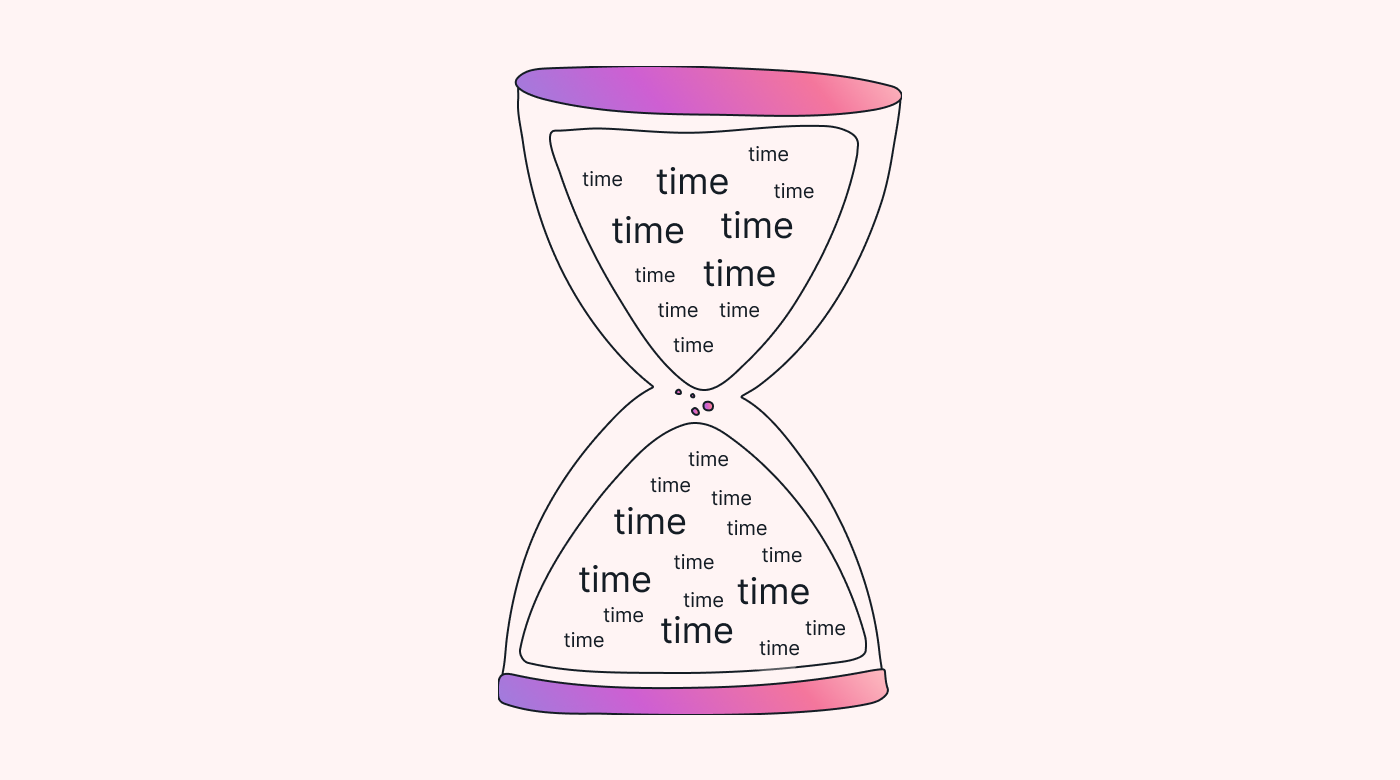 |
And when you meet your clients’ deadlines consistently, your company becomes reliable.
How to work within a given time constraint
Whether you’ve been given a time constraint by a client or need to work around employee availability, use the following guidelines to manage your and your team’s time:
1. Be realistic about how long tasks take
Knowing how long a task will take to complete is essential when budgeting your time. Over-budgeting leaves your project team unmotivated and wastes resources. Under-budgeting results in rushed work, stressed employees, and missed deadlines.
Use time management strategies such as time tracking to collect information about how long different tasks take to complete. Over time, you’ll be able to set aside time for tasks with accuracy and precision.
Knowing how long it takes to complete different types of tasks will also help you find areas that need improvement or restructuring.
For instance, if a certain type of task consistently runs past business hours, you’ll know to set aside more time for that sort of work in the future. And if a team spends hours in meetings that reduce their productivity, you’ll know to consider implementing different communication strategies to give them more time at their workstations.
2. Keep lines of communication open
When working within a time constraint, it’s important to communicate regularly with both the client and your employees.
Update your client with progress reports, and allow for feedback opportunities. Be honest with them if their expectations are unrealistic, and offer solutions to meet them halfway.
Prioritize communication with your employees through progress reports throughout the project. Follow up with them, and if you notice they’re behind schedule, help them get back on track.
3. Be open to adjusting your schedule when necessary
Unfortunately, few projects run without a bump or two. Make space in your schedule for additional, last-minute tasks, and understand that unforeseen problems are likely to crop up in every project.
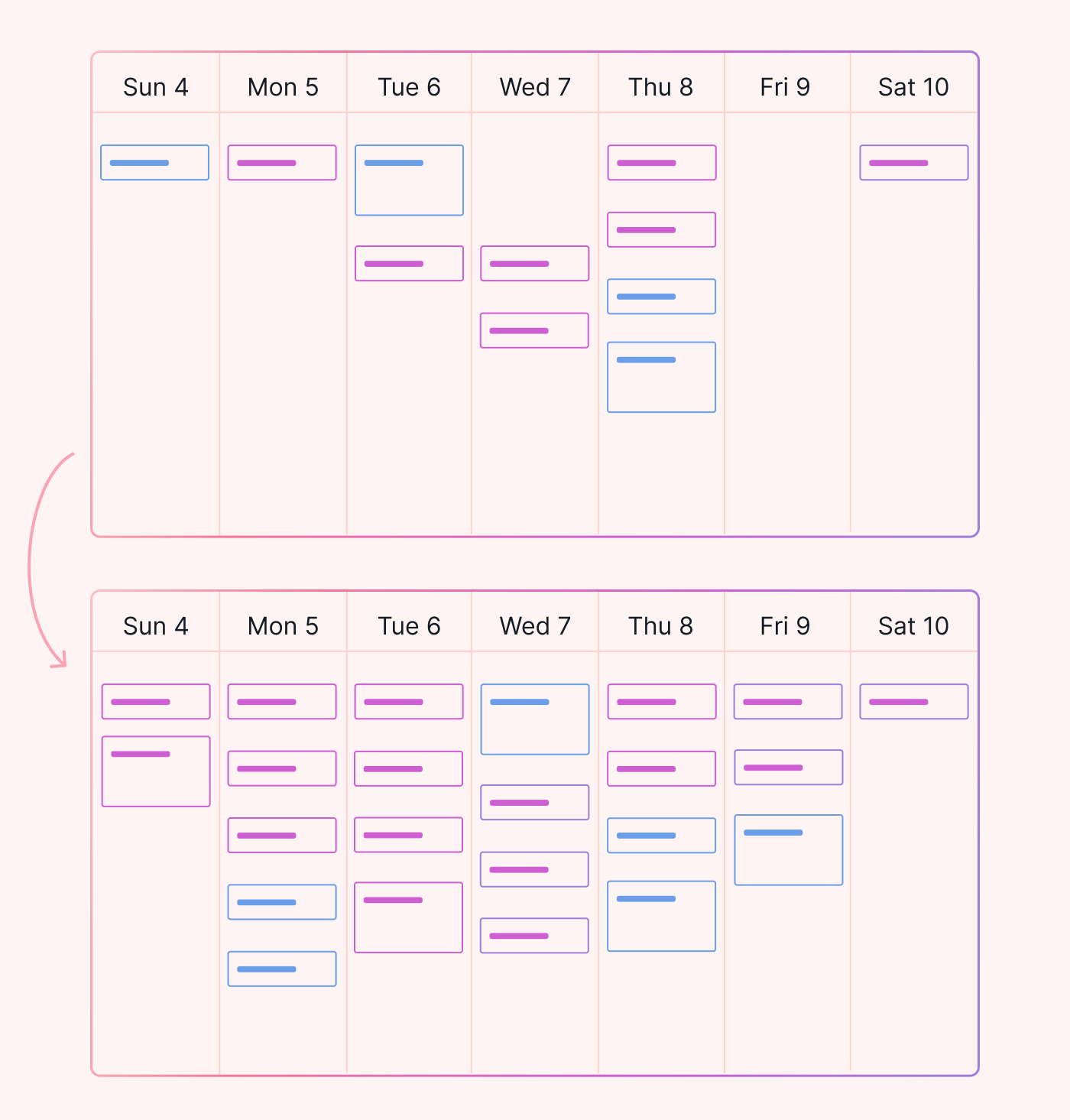 |
You may need to adjust your schedule to accommodate increased urgency for a different task, major adjustments to a separate project, or a personal emergency.
4. Automate where possible
Too many workers waste precious time on small, repetitive tasks. Eliminate repetitive and mindless work by setting up systems that do this work for you.
Motion is a time management platform that automates repetitive tasks for you, leaving you with more time to focus on projects that require your full attention.
How to coordinate time constraints across multiple projects
It’s rare for an employee to have only one project on the go at a time. Use the following tips to coordinate tasks from multiple projects with different deadlines:
Know the deadlines
Before letting employees dive into a project, make sure they know the deadlines throughout. They should also know the urgency and importance of every task within the project.
Having clear deadlines and levels of urgency helps when organizing daily calendars and to-do lists.
Time block
Multitasking has been shown to break people’s focus and reduce their efficiency and task performance. To avoid these issues, focus on only one task at a time.
Time blocking is a time management technique that involves setting aside sections of time, called blocks, to focus on one task or type of task. Encourage your employees to focus on tasks from one project at a time.
Alternatively, employees can batch similar tasks from multiple projects and tackle them all in one go. This time block could include emails, meetings, or other communication with clients.
Communicate
As a project manager, keeping communication channels open and accessible is important, as it allows your employees to alert you if they have too much on their plate and can’t complete their projects on time.
Check in with your employees frequently when they’re working on multiple projects. If necessary, help lighten their workload by delegating tasks or extending deadlines when possible.
Use Motion’s intelligent online calendar
Motion’s intuitive and robust calendar uses AI to create a detailed and flexible daily schedule. It automatically adjusts your schedule as you add or remove tasks, helping you manage your deadlines without having to waste time shuffling your tasks around manually.
Motion also allows you to set priority and importance metrics for each task and project, which it uses to determine which tasks need your attention most urgently and which ones can wait.
Your Motion calendar will alert you if you’re overscheduled and in danger of missing a deadline — giving you time to delegate responsibilities and reschedule deadlines where necessary.
How to coordinate time constraints across multiple teams
Managing time constraints for different teams and multiple employees can be daunting. Use the tips below to simplify the project management process and meet those deadlines.
Know your dependencies
It’s essential to understand how each task interacts with the other tasks within a project.
For instance, if Task B can only start when Task A is complete, or they need to happen simultaneously, your schedule needs to reflect that relationship.
Use Motion’s team scheduling software
Motion automatically assigns tasks to each team member at the start of the day, and it optimizes individual schedules to ensure maximum team productivity.
Motion calendars are easy to share, helping employees communicate their availability to each other while keeping specific tasks and meetings private.
Motion: the ultimate tool for time management
Time constraints aren’t going anywhere, so it’s worth learning how to meet and manage them. Motion makes it easy for you to take control of your deadlines and stay on top of your workload — even when last-minute tasks are thrown at you from every angle.
Our algorithms analyze your and your team members’ tasks and schedules so that you can organize and optimize your time effectively. And if you’ve overfilled your schedule, Motion tells you which deadlines you’re unlikely to meet and helps you re-prioritize your workload to get back on track.
Whether you’re juggling multiple projects at once or coordinating a team, Motion removes the need for hours of schedule shuffling — letting you dive right into the work that requires your full attention.
Ready to say goodbye to missed deadlines? Try Motion for free today!


